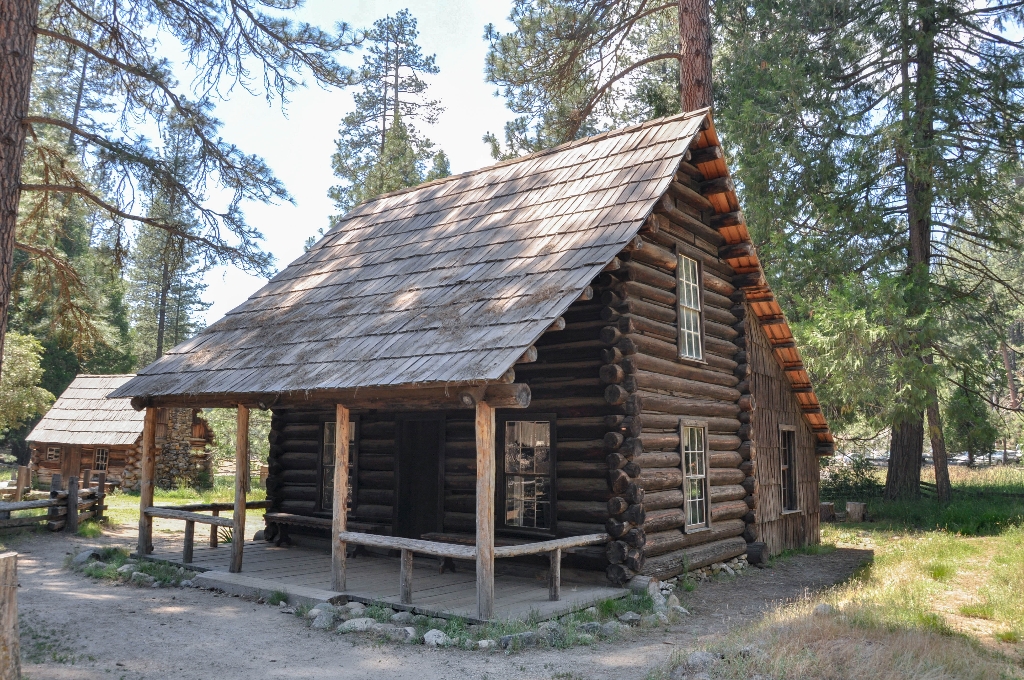
Much of the high country around Yosemite Valley had been claimed by individuals in the late 1800s. Thomas “Tom” Hodgdon acquired land for grazing cattle in Aspen Valley, now within Yosemite National Park. In 1879, Tom hired workers to build an access road, and a two-story cabin, on the land. To build the two-story log cabin, he hired a Chinese American cowboy named Ah Hoy and a neighbor named Franklin Babcock. The Hodgdon family, ranchers from the San Joaquin Valley, grazed cattled on their homesteaded land in Aspen Valley each summer.
Tom and family ran a ranching business, grazing cattle in nearby meadows. After these meadows became part of Yosemite National Park in 1890, U.S. Army troops enforced park regulations against grazing by dispersing cattle, and the Hodgdons lost grazing privileges. The family didn’t use the cabin for a while, and patrolling soldiers, and even Army horses, sheltered inside occasionally.
No longer able to earn a living with livestock in Yosemite, the Hodgdon family adapted to make money from tourism. In 1882, as part of the Great Sierra Wagon Road, the Hodgdons’ access road was improved upon by Chinese workers, and extended to Tioga Pass for silver mining. When the Tioga Road opened to the public, tourist traffic increased through Aspen Valley. The Hodgdon family used their cabin, and created a complex of new buildings, used for tourist lodging. Eliza Hodgdon, Tom’s spouse, added to the entrepreneurial effort by selling hot meals to hungry travelers.
Is there something we missed for this itinerary?
Itineraries across USA


















































